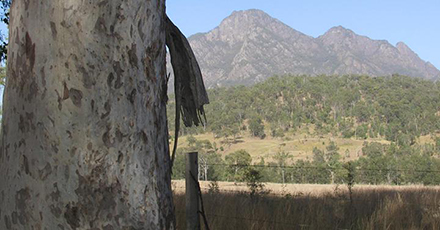A new study that claimed New South Wales taxpayers would save millions of dollars every year if the harvesting of native timber was stopped drew a sharp intake of breath in a number of quarters this week. None more so than from South East Timber Association secretary Peter Rutherford. The content of the study, he says, is misleading and the source of its funding possibly problematic.
The savings, he says, are predicated on the cessation of native forest harvesting from 1 January 2022 and would give affected families and businesses less than a month to adjust to the outputs of the fantasy world of this economic modelling.
The study by Frontier Economics and Professor Andrew Macintosh, from the Australian National University, estimates taxpayers would be better off by approximately $62 million over the next 30 years.
The report modelled the economic value of the native hardwood forests when harvested and used for timber products compared with being left untouched as an environmental and recreational asset.
Danny Price, managing director of Frontier Economics, said NSW could demonstrate strong leadership in removing the taxpayer burden of native forest logging in favour of boosting the tourism sector and carbon abatement.
“There is no doubt managing the native forests for conservation purposes provides greater economic benefits than logging,” he said.
“It’s a win-win and, quite frankly, a no-brainer,” he said.
Really?
The South East Timber Association was, justifiably, deeply disturbed.
Mr Price’s comment that it was a “no-brainer” according to Mr Rutherford was spot on, but not in a good way.
Someone, it seemed, had not done their sums properly.
Mr Rutherford pointed out a major flaw in the report showed about $80 million dollars of the economic benefit arising each year arises from avoided harvest, haul and processing costs. This $80 million had been accounted for in the cost-benefit analysis as a saving to taxpayers.
These operations, Mr Rutherford pointed out, are an expense paid for by timber processors, out of the $100 million in revenue that flows from the sale of forest products.
In other words, what are claimed to be avoided costs, are actually income that will be stripped from regional families, businesses and economies.
The report goes on to state that avoided carbon emissions associated with logging, provide significant benefit to society. But Mr Rutherford says that, aside from errors in the detail of the calculations, there is a major sticking point, with the $18 to $22 million revenue that is supposed to arise from carbon trading.
Currently there is no legal basis for this form of carbon trading. In Australia the only type of forest that is currently eligible for carbon trading is defined as “reforestation”.
Mr Rutherford quite rightly points out that a) this is land that has previously been cleared but now converted back to tree production and b) none of the carbon funds will actually come into local communities.
And Mr Rutherford points to another major omission from the report.
He says that as the state forests would no longer be generating any revenue, management of the 415,000 hectares of state forest in the Eden and Southern RFA areas would have to be fully-funded by taxpayers.
Latest figures show the taxpayer contribution to managing national parks is $50 per hectare higher than for state forests. The cessation of harvesting would deliver an annual additional burden on taxpayers of $20.75 million or $622.5 million (not inflated) over the 30-year analysis period.
Mr Rutherford believes the contents of the report are a clear example as to why academics and economists should not be allowed anywhere near decision-making processes for small to medium-sized regional businesses.
That, Mr Rutherford, is the real “no-brainer”.






